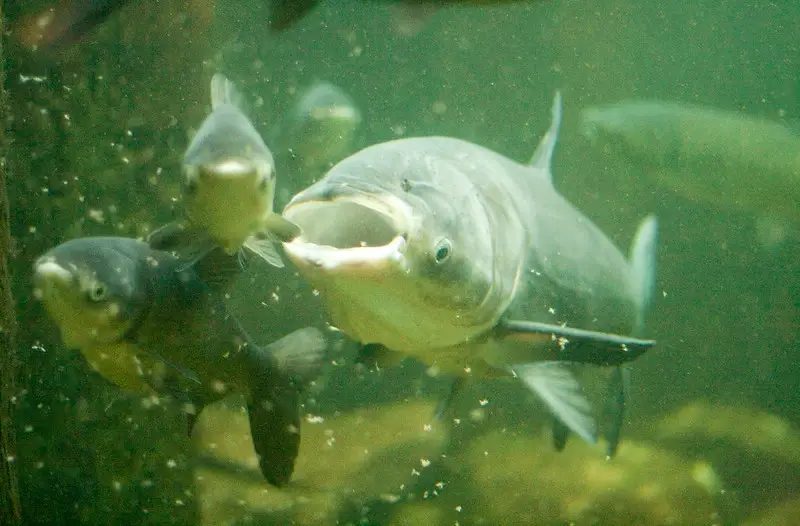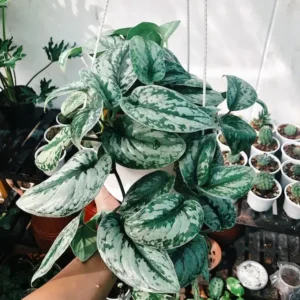The Carp is a significant and versatile family of fishes which are found all over the world.
The Asian Carp is a beautiful and exciting subcategory originally from eastern China but has now proved to be harmful to the endemic ecosystems of North America.
Some significant facts about these mysterious animals will clear all your doubts about their existence and effect on our lives!
Fun Facts About Asian Carp – 10 Things You Should Know!

1. Asian Carp are an Invasive Species in the US
Asian Carp are native to China and were brought to the United States in the 1970s to control algal blooms in wastewater treatment plants. Soon, they were also introduced in aquaculture reservoirs.
Today, it has become clear to scientists that the Asian Carp is an invasive species to the native animals of the US, and introducing them at such rapid speed was a bad idea.
They consume resources meant for other fishes and reproduce rapidly; they change the food web and over-populate small water bodies.
It has been found that Asian Carp have spread to habitats where already endangered species live.
2. Asian Carp Consumes Food Worth 40% of Their Body Weight
Asian Carp are initially from a warm and diverse part of Asia, where they must consume a lot to compete with other species. This is why they have evolved and increased their feeding capacity to 40% of their body weight.
These fish usually eat plankton during their larval and Juvenile stages of life. Adult fish can have a lot of different food, such as insect larvae, molluscs, snails, fish eggs, and aquatic bed plants.
Asian Carp bred for food must be grown in specially protected locations so that they do not consume industry oils and plastic, as this will then get transferred to the human body.
Must Read: Why Are Common Carp Invasive Species?
3. There are 4 Different Species of Asian Carp
The four invasive species of Asian Carp are the Grass Carp, Bighead Carp, Black Carp, and Silver Carp.
Each of these species has some distinct features. The grass car has an olive-colored belly, while the silver carp has a white-colored belly. Interestingly, both the bighead carp and the silver carp have their eyes sitting below their mouth.
4. It is Illegal To Possess Live Asian Carp in Indiana
Surprisingly, it is illegal to possess living Asian Carp in the state of Indiana.
While this may sound unnatural, this law was passed to make sure plant owners and aquaculture owners stopped using Asian Carp in their water any longer.
However, you can possess dead Asian Carp – meaning the consumption of Asian Carp or keeping specimens in biology labs is entirely legal. Import of Asian Carp has also been banned.
Wisconsin, Michigan, Tennessee, and Texas also follow the same law. This law is also equally applicable in Ontario as declared by the government of Canada.
5. Asian Carp Can Live Upto 20 Years
Asian Carp can live up to 20 years. They become adults at the age of 7. Some of them even live till the age of 30!
What further makes Asian Carp so tenacious is their ability to survive in frigid and scorching temperatures, different pH levels, and even in the absence of good quality food.
6. Asian Carps Hurt At Least 50 People Each Year
These fishes are also known as flying fishes because they can jump to great heights. Asian Carp will often jump out of the water and hit passengers, fishermen, and sailors.
This phenomenon is known as the Carp Attack. It can cause broken jaws, ribs, arms, and bleeding noses. Children and older people are doubly affected by such an attack from the Asian Carp.
7. The Biggest Asian Carp Can Be Heavy – A Massive 110 Pounds!
The giant invasive species are an average of 4 feet long and weigh 90 lbs. The largest Asian Carp ever recorded was about 110 Pounds.
Grass carp and black carp can be smaller, reaching only about 10 to 15 lbs. Bighead Carp, on the other hand, can be uncommonly large.
8. Female Asian Carp Lay 1,000,000,000 Eggs
Did you know that the Asian carp fish and the goldfish are a part of the same fish family?
The Asian Carp learned through evolution to lay several eggs, which helped them survive against the big predators in their natural environment. Because of this, the female carp now lays about 1,000,000,000 eggs in one go.
This massive quantity of eggs hatching every breeding season means that the species can easily take up space and replace other species by outnumbering them.
9. Asian Carp Can Help You Fight Cancer
These fish happened to be a great source of food. They were initially cultivated in China for medicinal purposes since consuming them can lead to a healthy immune system.
Asian Carp are rich in antioxidants that help them fight cancer and have low-fat density. Consuming the head of the Asian Carp can provide meat eaters with a fresh source of calcium and vitamin A.
The meat can help humans fight cancer due to the high presence of essential amino acids and PUFA.
It also contains 17.8 grams of protein per hundred grams of meat. Therefore, they can easily replace other fatty fish in our diet.
Recommended Reading: What fish is not a bottom feeder?
10. Dog Food Companies Include Asian Carp in Munchies For Your Pet!
These fish are pretty delicious and nutritious not only for humans but also for dogs.
The Asian Carp is ground up and mixed with other nutrients to make a new dog food that is an excellent alternative to dogs allergic or intolerant of general meat.
They have a mild smell and peculiar taste that the canines seem to like.
Wrapping Up
It turns out everything from their feeding habits to body size has complex effects on the native species of the US and Canada.
However, scientists have suggested making this inexpensive, delicious Carp a part of the human diet to not only decrease their pulao in the wild but also provide a new source of nutrients to families and pets.
Do you like Asian Carp in your diet? Let us know in the comments below!
Frequently Asked Questions
Q1. Where are Asian Carp found in the US?
Ans: Asian Carp are now found in the Mississippi River basin, including The Great Lakes. The region suffering most from this invasive species is the Upper Midwest region in the US and Canada.
Q2. How long can an Asian Carp get?
Ans: Asian Carp can be as long as 5 feet at most.
Q3. Is eating Asian Carp a sustainable, non-vegetarian choice?
Ans: Asian Carp are a fantastic non-vegetarian diet choice as they provide us with most of the valuable nutrients we look for in a fish – lean fat, high protein, amino acids, and antioxidants.
Q4. Why were Asian Carp initially brought to North America?
Ans: Asian Carp were brought to the United States in the early 1970s to control the rapid spread of algae, which was taking place due to the rising temperatures. They were first introduced into water treatment plants and aquaculture fields.



